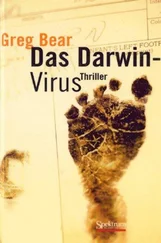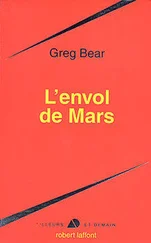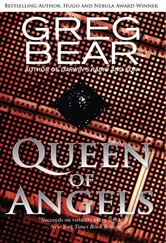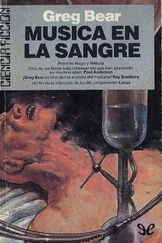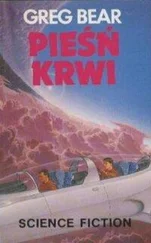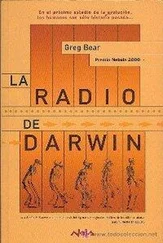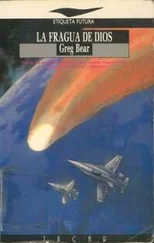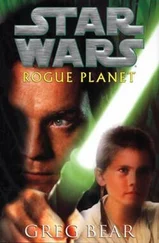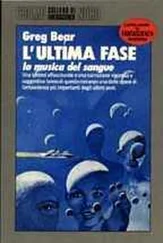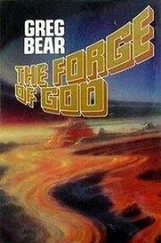1 ...7 8 9 11 12 13 ...19 The earliest known large fossils, from tens of millions of years before there were shelly or bony animals, are either lumpy bacterial colonies called stromatolites, or the peculiar formations that Adolf Seilacher named the Vendobionts. Another group name is Ediacara, from the Australian outcropping where type specimens were first found. These ancient life-forms had sat on the floors of shallow seas about six hundred million years ago. All they had left behind were sandy casts, impressions, little more than ghosts in stone. Until now.
I noted large chambers arranged radially or in grids, some rooted, some floating just above the seafloor. Mushroomlike bells; graceful, waving fronds; jointed blades; gelatinous air mattresses spreading over the silt. And all around them, perhaps their cousins and successors – possibly even their larvae, their propagules, the form which they assumed while spreading themselves to favored habitats – the xenos.
I was just guessing. I did not know whether xenos had any connection with these ancient marvels. But there they were – cozy chums at the bottom of the sea, just around the corner from Eden. If these were indeed the last Vendobionts, they had found a safe niche away from six hundred million years of evolution. Metazoan predators – our ancestors among them – had driven these ancients into hiding, forcing them into the ocean deeps.
I was getting way ahead of myself. Too much leaping and not enough looking, not enough science.
‘Is that a jellyfish – on a stalk?’ Dave asked.
Our lights were heating up the area, forcing some of the organisms to expel fluid and contract into wrinkled little raisins. ‘Dim the lights,’ I suggested.
Dave cranked down the rheostat. The seafloor became suffused in a golden glow, absolutely spectacular for mood. I wanted a room that color to sit and dream in. To dream of the Garden of Eden.
Nobody knows what the Ediacara organisms were, precisely, and where there is mystery, there is speculation, and where there is speculation, scientific careers can be made. Colleagues can debate, friendships can dissolve in argument. Wonders come and go and theories die a dozen deaths only to be resurrected and win the day. A possible connection between xenophyophores and the cushiony Vendobionts had hardly escaped notice. But nobody had crawled out on a limb as far as I had.
It certainly looked like a garden, an octopus’s garden, I started to hum, in the shade…
‘Are we there yet?’ Dave asked, tapping me on the shoulder.
I jerked, my reverie broken, and said breathlessly, ‘Yeah. Let’s circle – with the thrusters up. They look delicate. And let’s start the documentation.’
‘Video has been on for several minutes,’ Dave said. ‘I’ll get the Hasselblad. You blanket the scene with the digital camera. Here – let me lay down a photo grid.’ He paged through to the camera control display on the LCD, and squares of red light pulsed over the scene outside the sphere. Our cameras coordinated with the flashing grid.
We circled the garden, taking pictures for almost fifteen minutes.
‘Ow,’ Dave said, clutching his stomach.
I barely heard him.
‘Dog poop.’
‘Let’s collect,’ I said.
‘Okay,’ he said.
We moved into position to capture some of the smaller organisms. Somehow, breaking up the fans and bells seemed a sacrilege – but one we would no doubt commit.
I reached into my data glove and extended the manipulator arm, now tipped with a revolving suck tube. This was a special version of a tool used by earlier collectors to draw up specimens. Ours spun a small fan with variable pitch blades to pull water into a transparent acrylic tube.
I nudged the small tube up against a xeno in front of the DSV’s skids and fingered a small trigger. The fan spun. When the xeno crossed a photo detector, the fan cut off before it could squash the sandy blob against a mesh screen. Valves closed and capped the tube, and it rolled out of the way like a spent round in a gun.
Another tube was chambered, and, seconds later, another specimen – a segmented stalk – kinked and slipped neatly into the plastic prison. A third tube, and I had a small sea flower, each petal a separate cell covered with tiny hairs, like an arrangement of sea gooseberries.
Their jewel-like translucence gave me the final clue. These were not made of the tiny-celled tissues found in more familiar organisms. The sub’s golden light warped through thick cellular membranes with a peculiar refraction, like interference between two layers of glass. Lovely, oily little rainbows.
The Sea Messenger had eight pressurized drawers for keeping specimens alive. Recording temperature and pressure for each tube, I ejected them into the drawers.
Samples of ambient seawater were analyzed by a miniature NASA chemical lab, the data stored for transmission on the next uplink. Labs on board the mother ship would soon begin preparing aquarium inoculants.
‘What are you going to do with them?’ Dave asked.
I sucked up another specimen, chambered another tube. ‘They’re wonderful! I’ve never seen anything like them.’
Dave gave another groan. His face was pallid and green in the reflected light from the seafloor.
‘Are you all right?’
‘I feel really weird. I swear I didn’t eat any dessert.’
For a moment, making an effort, I forgot the manipulator arm and the precious specimens and sat up. ‘You look like you’ve got a chill.’ I reached out to touch Dave’s forehead. He batted my hand away.
‘Son of a turtle,’ he said.
‘Goddammit,’ I said, simultaneously, and I was suddenly, irrationally furious, as if a flashbulb of rudeness had gone off in my head. ‘Are you going to screw this up because of something you ate?’
He cringed and clutched his stomach, eyes going blank under another wave of pain. ‘Don’t take the Lord’s name in vain around me, buster,’ he said. ‘Grab your specimens and let’s get out of here. Quick!’ he growled.
I pulled back in my seat, jerked the arm toward the drawers, and spewed the last tubes out, one, two, three, into their receptacles. So many more to collect. But training and humanity beat science.
Dave looked bad. He drew his knees up in the chair.
A pungent, tropical odor filled the sphere. It wasn’t flatulence. It came from Dave’s sweat, from his skin, and it was starting to make me feel ill, too.
Topside was straight Up, eight thousand feet. Three hours minimum.
I took a last look at the Garden of Eden – what Mark McMenamin had called the Garden of Ediacara. Serene, untouched, isolated, downwind from the geyser spew, just as I had seen it in the photos – imagined it in my dreams – my triumph, the highlight of my exploring, perhaps the key to all my research…
‘Let’s go,’ I said.
‘Diddly,’ Dave muttered. His eyes went unfocused, wild, like an animal caught in a cage. He rapped his hand against the smooth inner surface of the sphere with a painful thwonk. The sphere was six inches thick – no risk of cracking it with bare knuckles. ‘It’s too…darned small in here,’ he said. ‘Colder than a witch’s tit,’ he added, eyes steady on mine, as if to receive applause, or criticism, for a dramatic performance.
Clearly not an experienced blasphemer. I stifled a laugh.
‘I can call you Hal, or Henry, can’t I?’ he asked, peppering the honey of sweet reason with sincerity.
‘Sure,’ I said. ‘Dave, we have to go up now.’
‘I got to ask you.’ He held out his hand, and the fingers twi??hed as if grasping something in the air between us. A little to the left, and he would have been strangling me. ‘I don’t really give a…horse’s patootie…I don’t give a dung heap if you know Owen Montoya. But did he ever give you a phone call?’
Читать дальше

